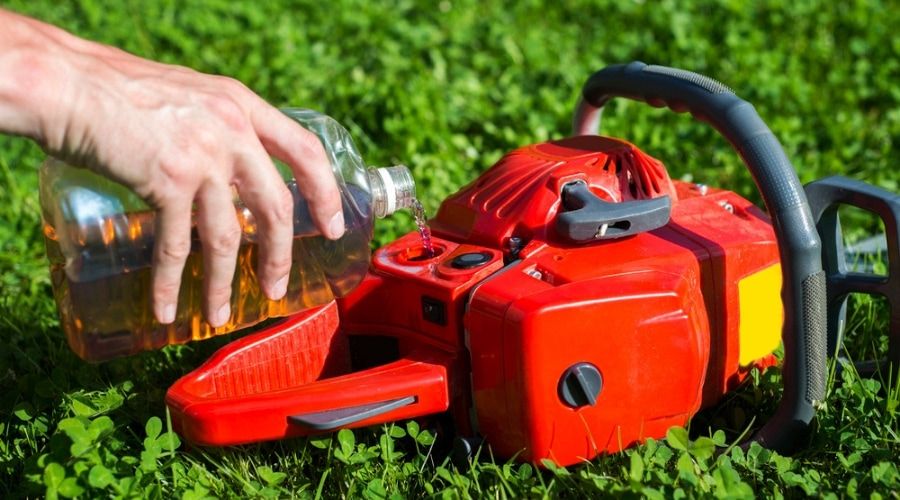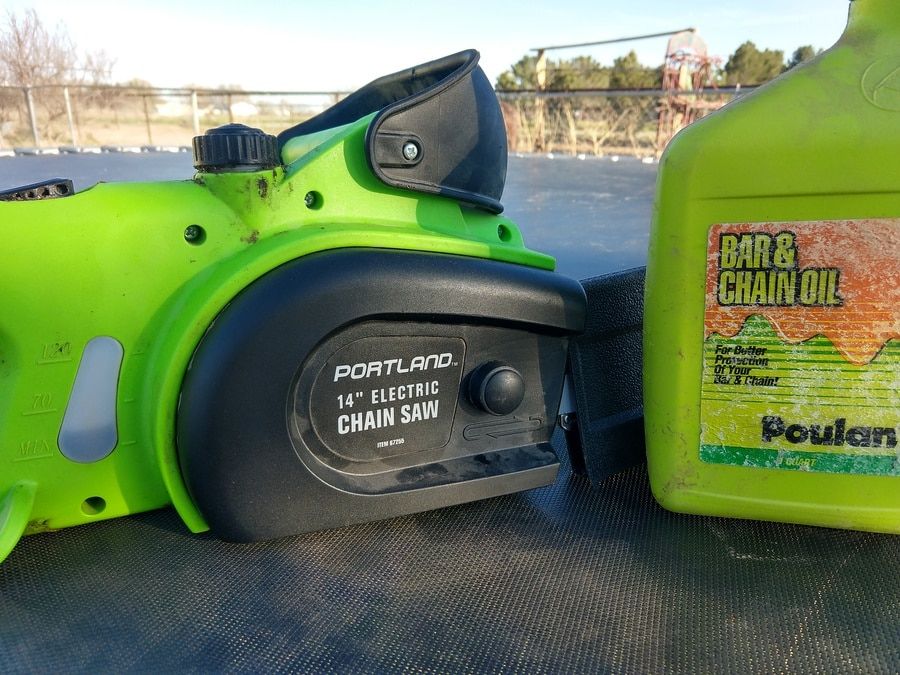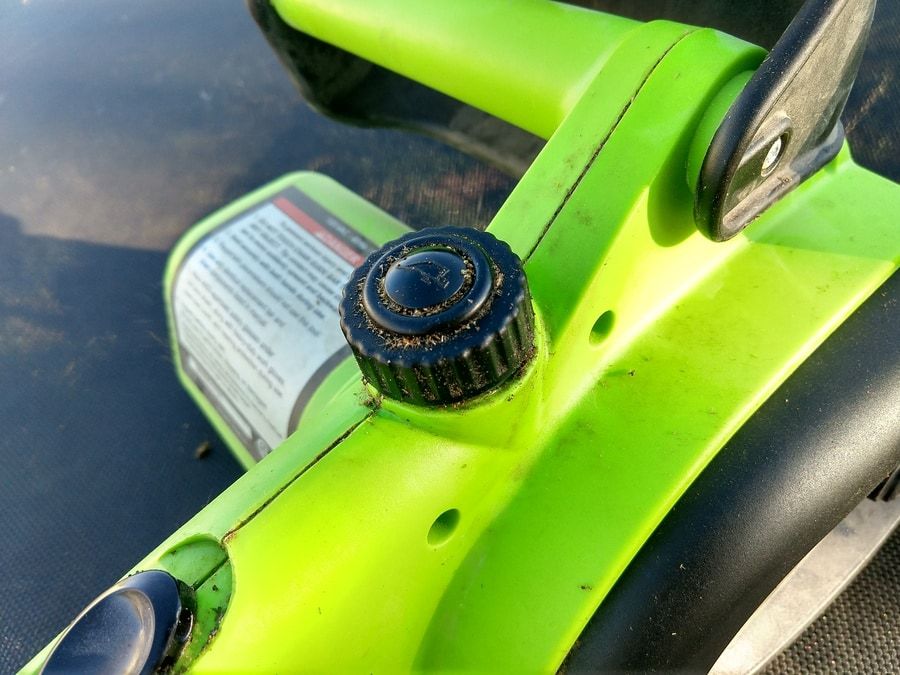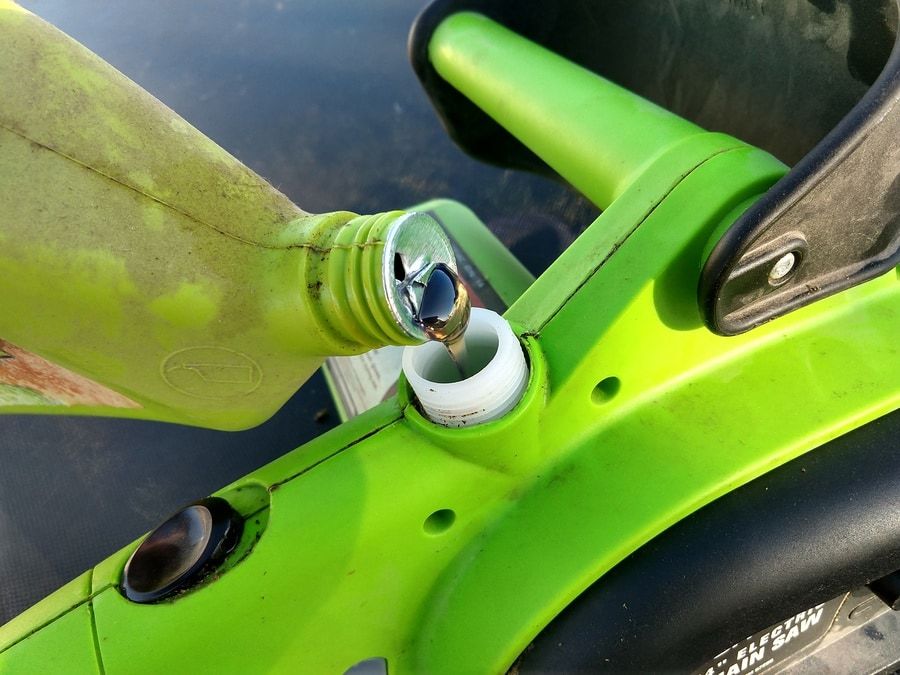If you are a new chainsaw owner than you probably are beginning to get comfortable with your new machine. But to keep your saw running smoothly, you need to provide some general maintenance, and one of the most important details to keep constantly in mind is your bar and chain oil levels. This is different than the oil that you mix with your gas to provide lubrication to the engine, and I’m going to describe below the importance of this task and explain how to oil your chainsaw for both the safety and care of your saw.
How a Chainsaw Works
A chainsaw is powered by either an electric or 2-stroke gas engine. This engine powers and spins a gear wheel. The chainsaw chain end fits around one end of the gear wheel and is mounted along a sturdy bar. When the gear wheel spins, it turns the chain around the bar, creating a powerful cutting tool.
Importance of Bar and Chain Oil
A chain can move up to 60 MPH, meaning it is spinning at approximately 88 feet per second along the sprocket and bar. This creates a lot of friction, all which needs to be kept lubricated in order to avoid overheating and binding. Oil allows for the smooth movement of metal against metal without overheating.
A saw that seems to be running sluggishly, feels or smells ‘hot’, or is going through gas faster than it should are all indications that the chain is not turning as it should. This can make the engine overheat as well as it tries to work against the friction being created by the chain as it runs along the sprocket and bar.
Type of Oil to Use
Bar and chain oil is specially formulated to be viscous enough to handle the high rate of friction caused by the chain. Most saws come with a sample bottle of oil and suggestions of which oil to by- but for the most part, the oil is that same from one brand to the next.
In a pinch, you definitely can use alternatives. Regular vegetable oil can be used and is surprisingly effective. However, it does not work well in extremely hot or cold work conditions. It is best left to when you are working in areas that may have restrictions on petrol oil in environmental settings.
It is best to avoid using any sort of motor oil due to the wrong viscosity. Again, if absolutely necessary, you can use it in a pinch- but choose a 30 weight oil and make sure it is clean to avoid any debris that can get caught in the bar groove.
How Self-Oiling Saws Work
Almost all saws are self-lubricating, meaning they have a reservoir designed to feed oil to the bar and chain as it runs. Oil is pumped out using the same crankshaft run by the engine that powers the chain. The oil then moves down a small canal to a small hole in the guide bar to the bar groove- within which sits the chain. As the chain spins it lubricates the entirety of the groove.
What You Need
- Bar and Chain Oil- Always helpful to keep on hand due to how much you use regularly.
- Gloves- It helps to keep oil and any dirt and grime from cleaning off your hands.
- Funnel- Avoid spills and make sure the oil gets to where it needs to be without mishap.
- Shop Towels- A must-have for working with powertool and chainsaws to help clean up any spills, as well as wipe clean surfaces.
Locating Your Oil Reservoir
Most oil reservoirs are very easy to locate and can be found by the oil cap on the main housing body to the saw. Many reservoirs are transparent as well, allowing you to see your oil level. If you are unsure of the location, be sure to consult the owner’s manual.
Filling the Tank
Before opening your tank be sure to clean the cap and surrounding area of any oily residue and dirt. You don’t want any particles to fall into the tank as it could end up in the grooves of the bar and wear on the chain and create an unsafe situation. Either with a steady hand or with the help of a funnel, pour your oil into the tank to either the marked line (if apparent) or until the tank is filled.
When to Refill
Saws are designed to feed oil as it runs, so most tanks are large enough to hold enough oil for a full tank of gas. Always check your oil levels before running your saw and during long periods of work. You don’t want to run out of oil as explained above, you can do damage to not only your bar and chain but your engine as well if you do.
Bar Nose Sprockets
Lubricating the sprocket at the end of your bar is reserved for only some of the largest, most powerful saws that have this specialized bar. Designed for longer chains and long-running, professional machines, these bars have a series of sprockets at the end of the bar to help guide the chain around. If you have a saw that uses this type of bar you will also need to get a grease gun and shoots few squirts in there as well.
Conclusion
Although probably one of the most important maintenance steps to take care of, oiling your chainsaw is also the easiest. Almost every saw has a self-lubricating reservoir that simply requires you to keep it properly cleaned up and filled up with each tank of gas- or whenever needed. Be sure to keep an eye on these levels to ensure your chain moves smoothly and your engine isn’t stressed.
If you have any questions please let us know below, and, as always, please share.





